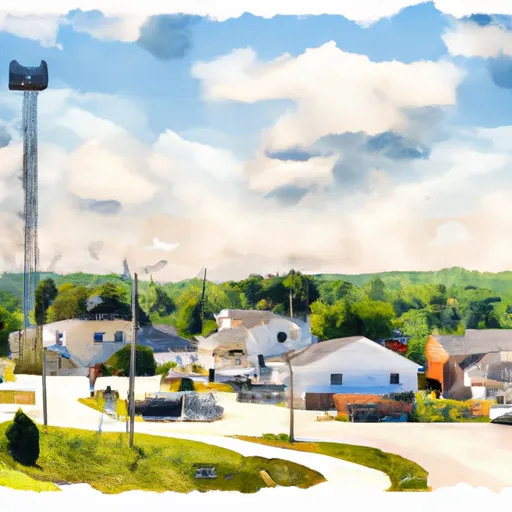-
 Snoflo Premium
Snoflo Premium
Get unlimited access to all our content
With no Ad interruptions! - Start Your Free Trial Login with existing account
Watton
Eden Index
Climate
5.4
•
Recreation
5.3
•
Community
•
Safeguard
4.0/10

Watton, Michigan is a picturesque town located in Baraga County in the Upper Peninsula of the state. It experiences a humid continental climate with cold winters and mild summers. Winter temperatures often dip below freezing, making it an ideal destination for winter sports enthusiasts. The region receives a significant amount of snowfall, creating a winter wonderland for activities such as skiing, snowboarding, and snowshoeing.
Watton is blessed with abundant water resources, including several lakes, rivers, and streams. These hydrological constituents provide ample opportunities for fishing, boating, and kayaking. The nearby Sturgeon River is a popular spot for trout fishing, attracting anglers from far and wide.
Outdoor recreation is a significant part of Watton's charm. In addition to the winter activities, the surrounding forests and trails offer excellent opportunities for hiking, camping, and wildlife viewing. Nature lovers can explore the nearby Craig Lake State Park, known for its serene landscapes and pristine lakes.
In summary, Watton, Michigan offers a diverse range of outdoor activities throughout the year, making it an appealing destination for nature enthusiasts and adventure seekers alike.
What is the Eden Index?
The Snoflo Eden Index serves as a comprehensive rating system for regions, evaluating their desirability through a holistic assessment of climate health, outdoor recreation opportunities, and natural disaster risk, acknowledging the profound impact of these factors on livability and well-being.
Climate Health Indicator (CHI): 5.4
Watton receives approximately
809mm of rain per year,
with humidity levels near 84%
and air temperatures averaging around
5°C.
Watton has a plant hardyness factor of
4, meaning
plants and agriculture in this region thrive during a short period during spring and early summer. Most
plants will die off during the colder winter months.
By considering the ideal temperature range, reliable water supplies, clean air, and stable seasonal rain or snowpacks, the Climate Health Indicator (CHI) underscores the significance of a healthy climate as the foundation for quality living.
A healthy climate is paramount for ensuring a high quality of life and livability in a region, fostering both physical well-being and environmental harmony. This can be characterized by ideal temperatures, reliable access to water supplies, clean air, and consistent seasonal rain or snowpacks.
Weather Forecast
Streamflow Conditions
Southcentral Lake Superior
Area Rivers
Southcentral Lake Superior
Snowpack Depths
Southcentral Lake Superior
Reservoir Storage Capacity
Southcentral Lake Superior
Groundwater Levels
Recreational Opportunity Index (ROI): 5.3
The Recreational Opportunity Index (ROI) recognizes the value of outdoor recreational options, such as parks, hiking trails, camping sites, and fishing spots, while acknowledging that climate plays a pivotal role in ensuring the comfort and consistency of these experiences.
Access to outdoor recreational opportunities, encompassing activities such as parks, hiking, camping, and fishing, is crucial for overall well-being, and the climate plays a pivotal role in enabling and enhancing these experiences, ensuring that individuals can engage in nature-based activities comfortably and consistently.
Camping Areas
| Campground | Campsites | Reservations | Toilets | Showers | Elevation |
|---|---|---|---|---|---|
| Livingston County 4-H Park | None | 636 ft | |||
| Sam Dale Lake Conservation Area | None | 493 ft | |||
| Moraine View State Park | 200 | 853 ft | |||
| Jurgens City Park | None | 658 ft | |||
| Stephen A. Forbes State Park | 135 | 604 ft | |||
| Coon Creek - Shelbyville Lake | 230 | 666 ft | |||
| Opossum Creek - Shelbyville Lake | 80 | 654 ft | |||
| Friends Creek Regional Park | 35 | 693 ft | |||
| Clinton Lake State Rec Area | 310 | 725 ft | |||
| Charley Brown City Park | None | 487 ft |
Nearby Ski Areas
Catastrophe Safeguard Index (CSI):
The Catastrophe Safeguard Index (CSI) recognizes that natural disaster risk, encompassing floods, fires, hurricanes, and tornadoes, can drastically affect safety and the overall appeal of an area.
The level of natural disaster risk in a region significantly affects safety and the overall livability, with climate change amplifying these risks by potentially increasing the frequency and intensity of events like floods, fires, hurricanes, and tornadoes, thereby posing substantial challenges to community resilience and well-being.
Community Resilience Indicator (CRI):
The Community Resilience Indicator (CRI) recognizes that education, healthcare, and socioeconomics are crucial to the well-being of a region. The CRI acknowledges the profound impact of these elements on residents' overall quality of life. By evaluating educational resources, healthcare accessibility, and economic inclusivity, the index captures the essential aspects that contribute to a thriving community, fostering resident satisfaction, equity, and social cohesion.

